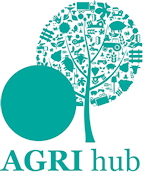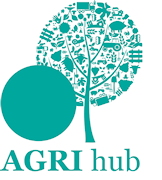 Farmers should assess finances now to make use of the new Countryside Productivity grant to boost efficiencies and improve production, advises Old Mill.
Farmers should assess finances now to make use of the new Countryside Productivity grant to boost efficiencies and improve production, advises Old Mill.
The Rural Development Programme for England launched the latest grant scheme for farmers last week. The Countryside Productivity small grant scheme allows farmers from both livestock and arable sectors to claim up to 40% towards new equipment or technology.
It is a positive leg up for farmers, says Mark Seager, rural services accountant at Old Mill. “Improving precision and productivity, as well as embracing innovation will help in uncertain times but it’s worth keeping the tax implications in mind.
“The main thing to be aware of is that applications close on 14 March. Ultimately, we are coming up to the March year end and people are starting to look at tax planning in order to utilise their annual investment allowance,” explains Mr Seager.
“If you’re looking to become more efficient and productive, it makes sense to apply for the grant but take into account the minimum grant of £3,000 and maximum of £12,000,” advises Mr Seager. The scheme allows for a grant of up to 40% of a purchase, so any purchases above £30,000 will not get more than £12,000 towards them.
“As it’s unlikely that an application would get approved and processed in time for the end of this tax year, it’s probably not an option to work it into your 2017/18 annual investment allowance,” says Mark.
It might be the case that the current investment plan for the 2018/19 tax year has made use of all of your annual investment allowance of £200,000, he adds. “If this is the case, look at whether anything can be brought forward before year end, or deferred to the following financial year to make use of the grant in your 2018/19 allowance.”
“There’s also no point applying unless you have the cash available to make the purchases – so don’t do it just for the sake of having a grant, especially if it means tying up cash when you don’t need the equipment,” he warns.
If you are planning to invest, it’s sensible to do a 10-month set of management accounts to look at profitability at the end of the period and estimate the projection for the following two months, he explains. This way farmers are prepared for how any purchases could benefit the business.
Most of the funding is likely to be applicable for the next financial year, so think about looking at the whole year ahead and the expenditure you may want to make in the following year. It might be a case of bringing a planned spend forward to make use of the grant. “If you have a machinery and equipment purchase plan for the next few years – it might be that this will need reorganising to fit with the grant.”
But do be aware that you must make the purchase and submit receipts within 150 days of being accepted for the grant. “You can’t use finance or a hire purchase agreement but loans, credit cards and overdrafts are fine – just make sure you have the ability to pay for it and it is paid for by the business,” he warns.
It is also worth remembering that you are tied to the equipment for five years as it can’t be sold on in that period and must be maintained. “The knock-on effect on cash flow needs to be considered – you could get up to 40% in grant money, but you will still have to fork out for at least the remaining 60%,” he says. “This also means that ultimately, you will only get tax relief on what you spend – which will be for the percentage the grant does not cover.”
It really is a no-brainer if you want the equipment, says Mark. “The younger generation particularly are being forward thinking and proactive at embracing efficiency improving technology and equipment – this is both a good opportunity and an incentive for them to make these changes.”


